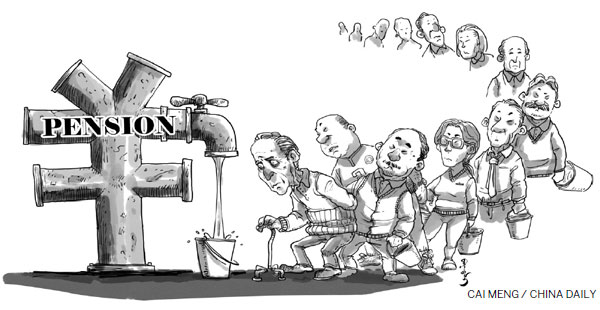
Without systematic reform these two explicit pension debts will increase with each passing year. In fact, the system design is unreasonable, because all pension funds are deposited in banks, making them cheap deposits for the banks.
The existing system has two recessive pension debts too. First is the personal accounts' reliance on financial subsidy. Personal accounts have inherent design defects despite being part of defined contribution plans on paper. If an account holder dies before retirement, the entire credit balance has to be inherited by his/her family. And if the account holder lives a long life, he/she will receive pension till his/her death. This shows the pension fund has financing gaps which can be filled only by a social pooling fund, that is, public finance.
Second, the rapidly increasing aging population will exert more pressure on social pooling funds. At 14.9 percent of the total population in 2015, the percentage of people aged 60 or above in China is lower than that in the G8 countries. But in 2049, the percentage of senior citizens in China's population is estimated to increase to 33.9 percent, which will be higher than that in major developed countries such as the United States, the United Kingdom, France and Canada.
Moreover, the pension insurance scheme of not only urban residents but also rural people depends on financial subsidy. In 2013, the overall financial subsidy for the pension system was about 500 billion yuan, or 0.88 percent of GDP and 3.9 percent of the fiscal revenue. This is expected to increase in the coming years.
These developments and the fact that the Third Plenum of the 18th Central Committee of the Communist Party of China in 2013 announced that actuarial balance would be maintained in the basic pension system and the personal account system would be improved indicate a transformation from a financial defined contribution to a notional defined contribution plan.
The author is director of the Center for International Social Security Studies, affiliated to the Chinese Academy of Social Sciences.
